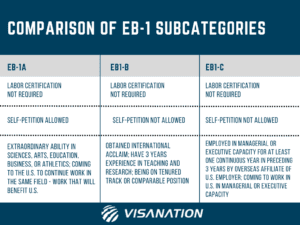Farmers to USDA on Foreign-Worker Subsidies for Central Americans: Thanks, But No Thanks
The U.S. Department of Agriculture wants to give $65 million to H-2A users who will hire farm workers from the Northern Triangle of Central America — much of the money going to said workers — but there were so few applicants that the government felt compelled to extend the application deadline.
The motive was a reasonable one: to try to get workers from El Salvador, Guatemala, and Honduras to come to the U.S. as legal, temporary, non-immigrant workers rather than as border-crashers; similar efforts to divert the mobs at the border into participants in the H-2B (non-ag) temporary work program have failed, as we reported earlier.
This is getting to be an old story. The government buys into industry arguments that there is a labor shortage in a given sector of the economy such as high tech, where H-1B workers are used; the government offers once-rare H-1B slots (following a lottery), but employers do not not accept 50 percent of them, so the government has to run the lottery again.
So now we have four foreign worker programs in which the administration is offering benefits of one kind or another to employers, only to have the employers say “Thanks, but no thanks.” The fourth example is in the CNMI territory, just north of Guam.
In the most recent case, USDA offered the Farm Labor Stabilization Program (FLSP) to H-2A growers with the stated belief that there is a farm labor shortage and that it might be solved in part by better wages and benefits for the workers.
At first there was a November 23 deadline. Apparently the applications did not use up the money offered, and the deadline was extended to January 3 of this year. How often does the government have trouble giving away money?
My sense is that the growers were not terribly interested in the offer for four reasons:
- FLSP did not offer more workers to the growers, as the H-2A program has no numerical limits, just better-paid ones;
- The H-2A growers are used to their current labor sources — mostly Mexico and to a lesser extent Jamaica — and have no particular interest in working with new populations;
- At a quick reading, I would say that it looks like the program benefits will go primarily to the workers, rather than to the growers; and
- The application process looks very complex and challenging, with a touch of the ivory tower in it.
On this last point, FLSP is a competition with a finite number of winners; growers with the best offers to their workers are going to be the winners. (In H-2A, generally, if a grower qualifies it gets the workers it wants, year after year, without much worry about the quality of the application; it is either good enough to get DHS approval or not.)
FLSP is a complex program; for starters there are 21 categories of rewards, based on three levels of effort (base, silver, and platinum) and on seven different sizes of the workforce, here referred to as FTEs (full time equivalents). These range from $25,000 for a minor effort on a small farm up to $2 million for a major effort by a major employer. The employer must make a pitch for one of the 21 groupings.
The second step in the process is for the grower to agree with all the rules and regulations of the H-2A program, which makes sense.
The third step is for the employer to select one of the seven sizes of awards, based on how many workers it has.
The fourth step is to decide which level of reward it is seeking, base, silver, or platinum — in most grant programs there is only one level of award. Let’s assume that the employer is mid-sized, say it has 76-200 workers and it is shooting for the silver award of $600,000.
The fifth and most intricate step comes next; the employer must choose two benefits from a list of six benefits and provide them to its workers for the length of the program. In this case, for the silver-level reward, it must choose two programs from among the six specified ones, whose descriptions we have edited for space reasons (if an employer chooses three, it can move up to a $1.2 million platinum prize). The six are:
- Overtime pay at 150 percent of base pay, provided this is not already required by state law;
- Clearly defined bonus payments;
- Paid sick leave;
- A weekly housing maintenance plan;
- The creation of a formal, worker-participating working group; and
- An innovative working partnership as described on p. 11 of this 31-page document.
The sixth step is to do everything promised and to file the needed reports. Oh, yes, and there are extra points if the workers are hired from the Northern Triangle, but non-users from these countries may apply as well.
All of this is highly commendable, but you can see why growers have not overwhelmed USDA with applications. It will be interesting to see how all this plays out.


![[Webinar] 2023 Design Patents Year in Review: Analysis and Trends – January 30th, 1:00 pm – 2:00 pm EST | Sterne, Kessler, Goldstein & Fox P.L.L.C. [Webinar] 2023 Design Patents Year in Review: Analysis and Trends – January 30th, 1:00 pm – 2:00 pm EST | Sterne, Kessler, Goldstein & Fox P.L.L.C.](https://jdsupra-static.s3.amazonaws.com/profile-images/og.14437_5906.jpg)


